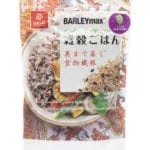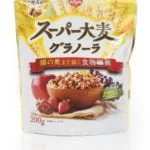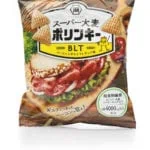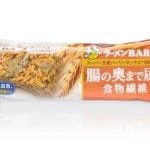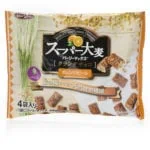It is common opinion that the Japanese are ahead of the game in many industries. The Japanese were one of the early adopters of functional foods, that is, foods that provide special health benefits beyond the basic nutritional components of energy, vitamins, minerals etc. In the early 80s, the Japanese academic community defined functional foods based on three functional levels; the primary being nutritional, secondary sensory and third physiological. 1 So great was the interest and adoption of functional foods, that in 1991, The Japanese Ministry of Health, Labour, and Welfare (MHLW) set up ‘Foods for Specified Health Use’ (FOSHU) as a regulatory system to approve the statements made on food labels concerning the effect of the food on the human body. This was the first-time food could legitimately be labelled and categorised as possessing specific health promoting or disease preventing properties.
The FOSHU system was introduced to encourage the maintenance of health, prevention of lifestyle-related diseases based on the consumption of functional foods with scientific evidence. To secure FOSHU status, there must be adequate evidence of effectiveness of the products; there must be identification of active constituents and guarantee of its safety. The process for FOSHU approval is very strict and in 2015, another system was established – Food with Nutrient Function Claims (FNFC).
For FOSHU, the government is required to evaluate the safety and effect and the CAA (Consumer Affairs Agency) gives approval for labelling of each food product that satisfies the requirements. The FFC however, is only a notification system, where manufacturers need to meet six criteria to make a claim on pack. 2 This self-substantiated system is similar to the FSANZ health claim system in Australia and New Zealand.
The Japanese are recognised as one of the healthiest nations in the world with a very low rate of obesity. Is this connected to the neba neba (sticky and slimy) foods eaten in Japan? Natto is a classic example of neba neba. It is fermented soy beans and must rate as the equivalent to Vegemite in Australia; looks awful and has a very ‘distinctive taste’ that non-Japanese rarely take to. The sticky slime in natto may be fermented by the colonic bacteria and produce short chain fatty acids that may provide a mechanism to link neba neba consumption to gut health and weight control.
Whether a product has FOSHU or FNFC status or not, one thing is clear, the Japanese appetite for functional foods is not waning. Claims exist for ingredients such as lactoferrin, chitoglucan and licorice glabridin all linked to reducing visceral fat.
Japanese researchers have also noted that probiotic effects can be observed with non-viable probiotic preparations, which opens up the introduction of prebiotic ingredients derived from probiotic bacteria. Within this market where functional foods have become very mainstream, it was a natural fit for the introduction of a prebiotic wholegrain like BARLEYmax®
There are over 20 products with BARLEYmax® in Japanese supermarkets. These include granola, soba (buckwheat noodle), biscuits, snack bars, rice mixtures, a smoothie, bento (lunch box) and onigiri (rice ball).
- Steamed rice & barley
- Granola
- Crisps
- Muesli bar
- Cookies
Whilst Japan may be ahead of its time, globally there is growing consumer awareness of the benefits of consuming prebiotics and the positive effect such consumption may have on the risk factors for many chronic diseases. Consumers are in turn looking for functional foods that link these benefits to changes in the gut microbiome.
The Healthy Grain company has recently commissioned a Systematic Literature Review, conducted by Dr Tim Crowe, to examine whether BARLEYmax® barley prebiotics support digestive health. On the basis of the positive conclusion of this SLR, The Healthy Grain company has formally notified FSANZ (Food Safety / Standards Australia & New Zealand) of this self-certified health claim.
Australian and New Zealand food manufacturing businesses who are producing prebiotic rich foods featuring BARLEYmax® are now able to include on-pack statements regarding digestive health. These statements are critical to informing and educating the modern consumer who is increasingly interested in the importance of gut health and who is seeking functional foods that can help to achieve this.
Learn more about The Healthy Grain’s Systemaic Literature review here.
Teri Lichtenstein APD
References:
-
Shimizu T. Health claims on functional foods: the Japanese regulations and an international comparison. Nutr Res Rev.2003 Dec;16(2):241-52.
-
Maeda-Yamamoto, Mari. Development of functional agricultural products and use of a new health claim system in Japan. Trends in Food Science and Technology. Volume 69, Part B, November 2017, Pages 324-332
Intended as general advice only. Consult your health care professional to discuss any specific concerns.



